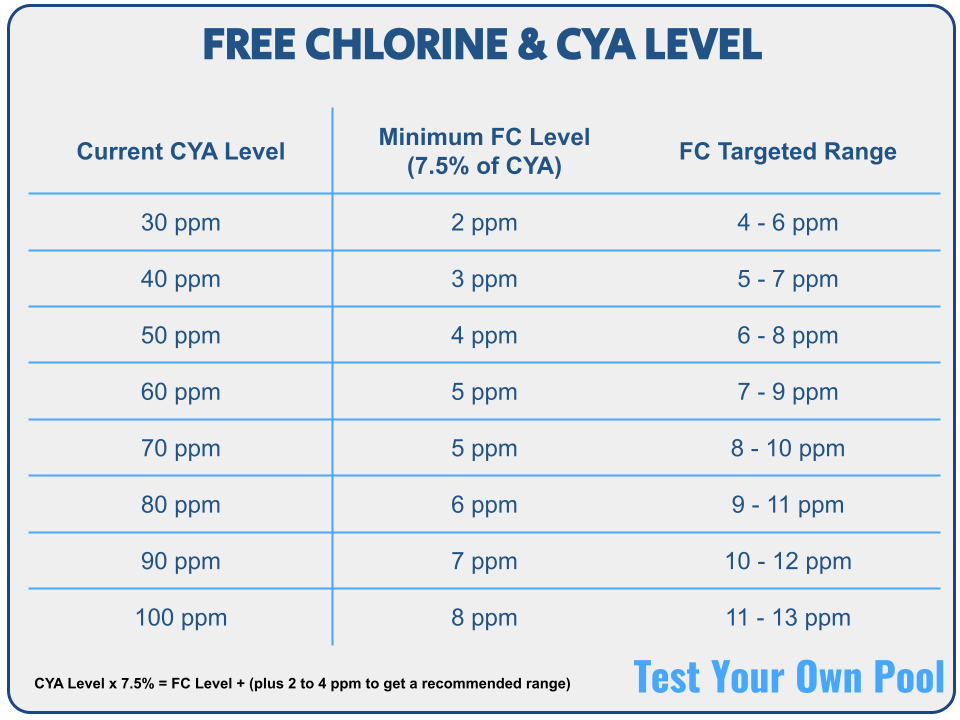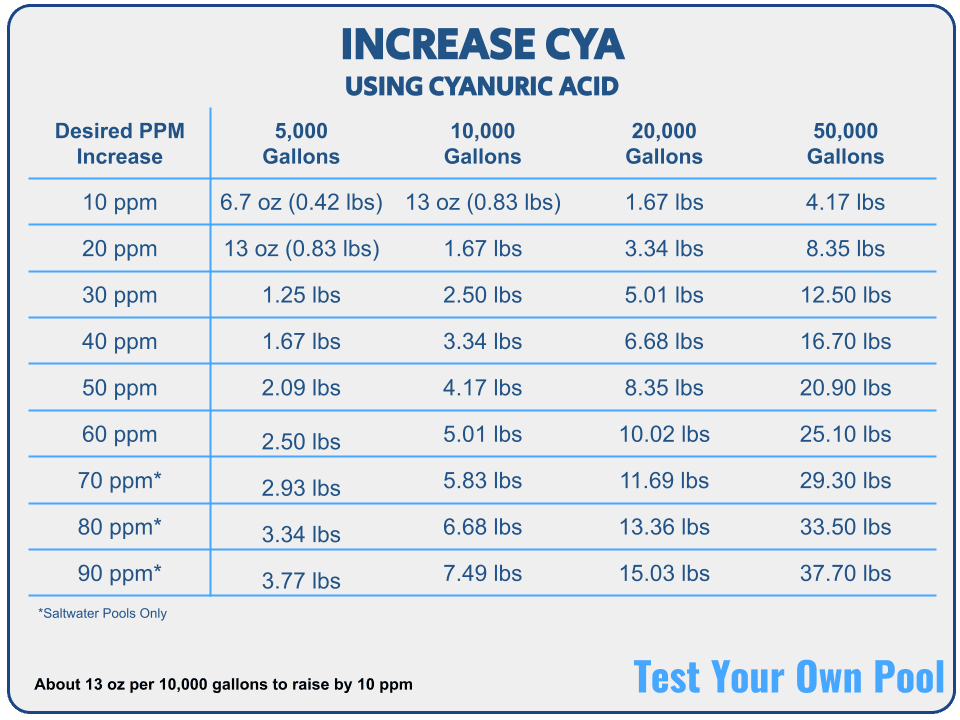What is Chlorine Lock and How To Fix it

Chlorine is the bedrock pool chemical. Any type of water issue or problem pretty much starts and ends with chlorine usage.
Oftentimes, chlorine doesn’t really “work” the way that it should. The pool industry refers to this as a “chlorine lock”. Let’s break this down and understand what chlorine lock really is and how to fix it.
What is Chlorine Lock?
Chlorine lock is a perceived notion that chlorine is rendered ineffective due to too much stabilizer, or cyanuric acid (CYA), in the water. This is both untrue and a little true at the same time.
First, the idea of chlorine lock is not actually a real thing. Chlorine is never “locked” in the sense that there is no level where chlorine doesn’t work. What is true is that too much CYA will require more chlorine to be effective.
In summary, chlorine is never “locked” but rather there isn’t enough in the pool to properly fight organics and contaminants due to high CYA.
What is Chlorine Demand?
Whereas chlorine lock is not a real premise, chlorine demand has a bit more truth to it.
As contaminants and organic debris enter the pool, chlorine fights to eliminate them. The more organics, the more chlorine is needed, or demanded, from the water. This is generally determined by free chlorine (FC) readings which show how much chlorine is available for use.
Chlorine demand is largely dependent upon the amount of combined chlorine (CC), or chloramines, in the water. Any CC reading above 0.5 ppm indicates chlorine is actively fighting something, which will require (demand) more FC.
Fun fact (or not so fun): that funky “chlorine smell” that some pools give off, you know that smell, is actually due to chloramines in the water, not the chlorine itself.
Fixing Chlorine’s Ineffectiveness
Again, the concept of chlorine lock is not true. Having a high CYA that requires more chlorine to be effective is true.
With that said, chlorine ineffectiveness can be solved by addressing the high CYA issues and killing whatever chlorine is currently fighting.
Maintain a Proper CYA Balance.
An ideal CYA level is between 30 to 60 ppm. Saltwater pool owners can afford a higher CYA at about 60 to 90 ppm.
As stated above, higher CYA levels require more chlorine. To understand this concept better, we need to further expand upon the relationship between CYA and free chlorine (FC).
First, two things will break down free chlorine (FC): sunlight and organics in the pool.
CYA acts as a “buffer” to FC. It protects FC from UV light degradation (sunlight) and blocks the overall harshness of chlorine, which makes it last longer. It is a stabilizer and will be sold in stores under that name.
High levels of CYA lessen the effectiveness of chlorine, but never to a point where it gets locked. It will just force you to use more chlorine until FC reaches a level where it can be productive again.
While we are on the subject, with low or zero CYA levels chlorine will not last long and get burned by the sun. You will also need to use more chlorine since it isn’t lasting as long. This is why it’s important that CYA is at the recommended ranges.
Because of this working relationship, the amount of FC needed in the pool should be determined by how much CYA is in the water. At a minimum, FC should be 7.5% of CYA in order to be it’s more effective. Aim to be 2 to 4 ppm above the minimum.

If CYA is 100 or higher, you’re going to need a ton of chlorine just to be neutral. The best recommendation is to lower the CYA to a more manageable level.
To only way to lower CYA is to partially drain the pool and refill it with fresh water. In general, once CYA is added to the pool, water loss is the only solution. You might see stabilizer decreasers at pool stores, but most are just a fool’s errand and a waste of money.
To increase CYA, you’ll just need to simply add cyanuric acid to the pool.
Helps reduce chlorine loss due to sunlight and organics. 7-pound bag.
But be careful and don’t add it all at once, remembering that overshooting it will require draining some water. Refer to the chart below. It is best to add CYA granules using the sock method.

Fighting Chloramines by Increase Chlorine to Shock Levels
Chlorine demand is fixed by, you guessed it, adding more chlorine! Essentially, there is a problem in the water and the current FC level cannot fight it.
If testing the water shows CC levels above 0.5, you’ll want to shock the pool and increase FC to a certain level that is based on the current CYA. Learn how to shock the pool the right way.
Shocking with a very high CYA will be very costly so it is recommended first to get that in range. Lowering CYA can only realistically be done by a partial pool drain and refill.
Lock or Not, Keep the Balance!
Whether chlorine lock is a real concept or not (it’s not), a lack of chlorine can cause major water issues that may take days to weeks to overcome.
Keep a routine testing schedule and maintain that water balance so you never have to think about chlorine lock or demand again

